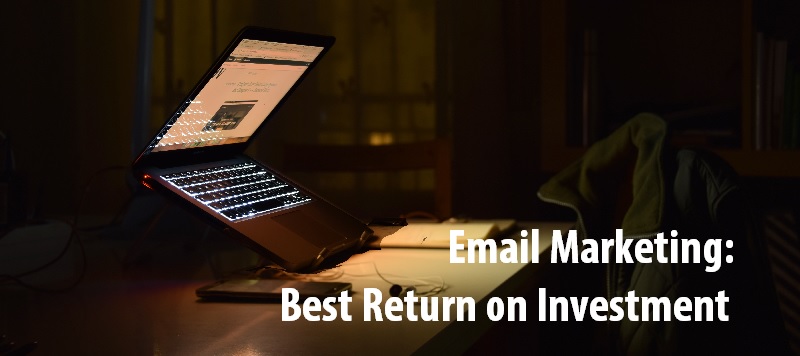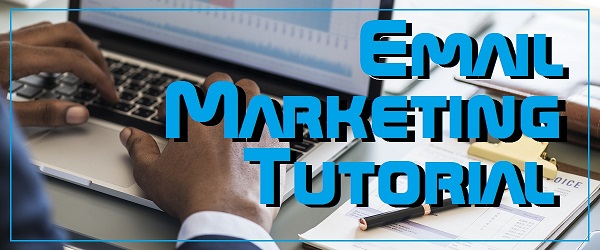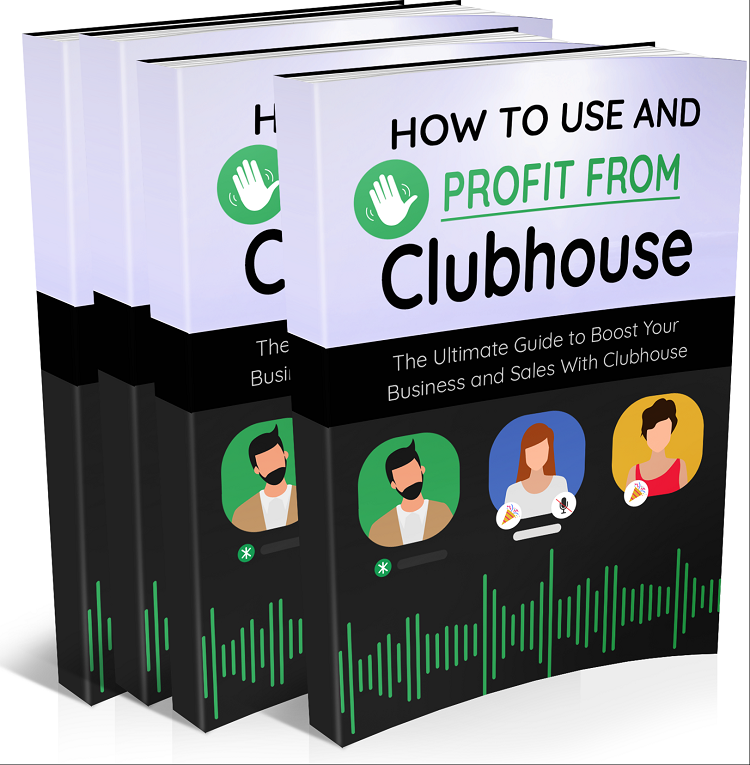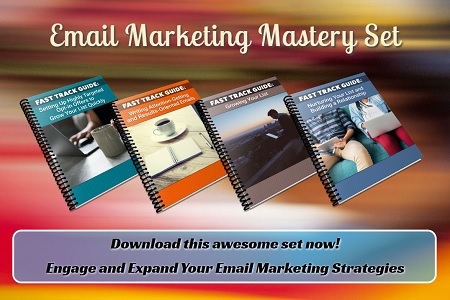Email Marketing
4 Stages of Email Marketing
“Email has an ability many channels don’t: creating valuable, personal touches – at scale.” David Newman
So far, we’ve learned about how to write effective and impactful emails that convert, the elements that make up high converting emails and how to turn anything into email copy.
This course will show you the four different stages of email marketing.
Once you get people to subscribe and be on your list there are several times and reasons you should be sending them emails. First of all being consistent and staying in touch helps your subscribers remember who you are.
Email marketing done right can get results for your business, even if you are just starting out.
It’s not just the size of your list that matters anymore. It’s about how excited, engaged and yes, how responsive your readers are. Building that engagement begins with the very first welcome email and doesn’t end until they unsubscribe.
You want to build a relationship with every subscriber. You must be building trust in both you and your brand.
Before you start your email marketing, create a plan of what you want your subscribers to learn, get out of your emails and where you want to take them in the future.
The four stages of email marketing begin with the initial lead generation when they first subscribe. Then it moves to nurturing those leads by keeping them engaged with the them goal of turning them into customers.
Next you need to re-engage those who have gone stale or have stop responding. Finally, after they’ve move to customers you want to find ways to get them more engaged and buying more.
This guide takes your through each of these four stages, giving you the strategies and tips to build your email marketing plan for high converting emails.
Let’s get started.
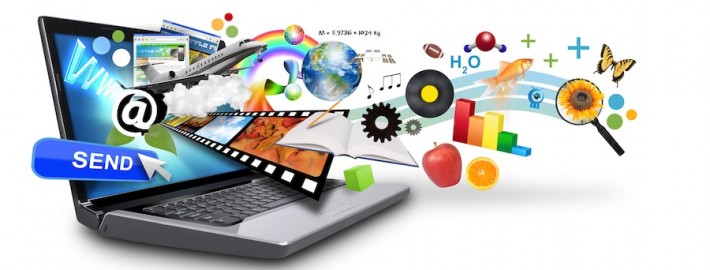
Initial Lead Generation
It happened. You got them to sign up and download your freebie. Now what?
Now is the perfect time to begin building a relationship with them. Your first email, the welcome email, sets the tone for how your reader is going to interact with you.
Many brands simply send out a subscription confirmation email. That’s okay but you can begin building your relationship with a few changes to that first email.
You want to create an email welcome campaign that will reduce the time until they make their first purchase from you. Building your relationship from the very first email with your subscriber increases the conversion rates and subscriber loyalty as well.
That’s why it’s important the message be branded, compelling and useful to the reader.
In the welcome email and the series that follows, you are introducing yourself and getting to know what your readers need. A welcome email series can be any length, but the average is 5 days.
You can create an email series in different ways. Here is a general guide. You may have different goals for your email series.
Start with the welcome email.
In the first welcome email, thank them for subscribing and request they add your email address to their approved senders list. Tell them what to expect out of their subscription and the frequency you’ll connect with them. This also a good time to find out why they subscribed and what they expect to get out of their subscription.
Email number two is where the relationship starts to build. In this email you can begin by telling them a story with a surprising fact that makes them think.
Email number three of the initial series continues building the relationship. In this email you can start giving solutions to the problem you talked about in the previous email.
Email number four is unexpected effects of solving the problem you and others have had and how you overcame them.
The last email is where you can begin to pitch your personal system. Show them how you overcame the problem you mentioned.
When creating a successful welcome email campaign, there are several strategies that can help you.
1. Always begin with a Thank You. It’s just being polite. While it’s important to confirm they successfully signed up, you want to make sure your new subscriber knows how thankful you are to have them join you. Your potential customer has engaged with you so it’s your responsibility to recognize that and establish a good first impression.
2. Get the subject line right. The goal of your emails should be to get the customer to continue the journey with you once they fall into your inbox. The subject line holds the key to that. Your subject line gives new subscribers to your brand a sneak peek into your brand. The subject line needs to pique their interest enough they open the email and read more. It’s your opportunity to provide a positive experience from the beginning.
3. As mentioned before, you want to explain the benefits of being a subscriber to your email list. Why should they sign up? Let a new subscriber know what they will get out of your communications.
4. One way to say thank you is to offer a personalized incentive or discount code. Leverage the opportunity to inspire further action from your new subscriber right away with something that invites them to become a customer.
5. Provide your new subscriber with information about your brand. But don’t get too carried away and too technical. Instead use storytelling and personalization to grab your readers attention.
6. You can and should include relevant links to your website and your social media channels. Incorporate a call to action at the bottom of the email that takes your new subscriber to a page with valuable and relevant information.
7. Show them you value their readership by providing them with an exclusive offer or promotion if you aren’t giving them a discount or coupon code.
8. Make your welcome emails pop to make them engaging and easy to read. You can do this with images of you, your team or some other way to show you are human.
9. Set up your welcome emails so they are segmented to the type of subscriber they are. For example, if they bought a product their emails should be different than if they got on your list through a freebie offer.
The first stage of email marketing is all about setting the tone for the rest of your time together with your new subscriber. Take advantage of this space to provide value and begin building relationships.
Here are some best practices to help you create a lead nurture email action plan.
- Begin by creating your subscriber persona. This will represent your ideal customer to help you know what content to develop that’s targeted to potential customers and for each stage of their journey through your email market. Gather information like:
- Gender
- Job tile/role
- Industry
- Their income
- Their hobbies or interests
- Geographic location
- Their challenges or problems
- Are they married?
- What type of home do they live in?
- Do they have kids?
- Segment your subscribers into specific lists as to what interests them. This information can come from their activity, their interest, job type, what lead magnet brought them to you, and other data you collect.
- Use personalized content for subscribers. This can include greeting them by names in emails, offering exclusive deals for subscribers only, responding personally to customer questions or giving them first look at upcoming products, services or events.
- Send them content that focuses on nurturing them. This can be teaching them how to do something or information on industry specific news. Use storytelling to entertain and draw some sort of emotional response from them. Be open and share personal tidbits about your life.
- Educate them more often than selling to them, especially in the beginning of their journey. We all aware that being in business means we have to sell to earn, but the customer doesn’t like every email being a sales page. It’s okay to show them what other customers have purchased in the past if that adds value for them or show them how to leverage your product if it adds value.
- Use:
- Screenshots and directions on how to use your software.
- Include industry stats that the readers might be interested in.
- Give them resources that will help them with their challenge or problem.
- Send them information about products they’ve shown interest in.
- Teach them about the benefits of your service or product.
- Plan for the natural progression of your subscriber. The early emails will be more educational while subsequent emails will not only educate but give them opportunities to purchase something.
- Whatever type of content you’re using it needs to be super relevant and gives real value on a regular basis. This keeps your leads warm and gives you the chance to mention how your product or service can help them.
The nurture email is the meat and potatoes of your list. These are the ones that are ready to learn, buy and build relationships. Send them valuable content that keeps them interested.
Lead Nurturing
Now that you have them on your list, and they’ve been through the welcome series it’s time to begin nurturing them. You want to keep those leads warm and engaged with a goal of turning them into customers. So how do you do that?
Nurturing your lead means staying in contact with them while building a long-term relationship. Your nurture emails will naturally follow your welcome emails because you want to keep them engaged.
You can create effective lead nurture emails that educate and encourage your contacts to become customers by signing up for your service, making a purchase or performing some other action you have set for them.
With your nurture emails, you can show off what makes you different from your competitors. You can provide them with the perfect solution to their needs.
Email Marketing is impossible without a good Autoresponder.
If you are interested in an autoresponder recommendation, contact walter@walternigh.com
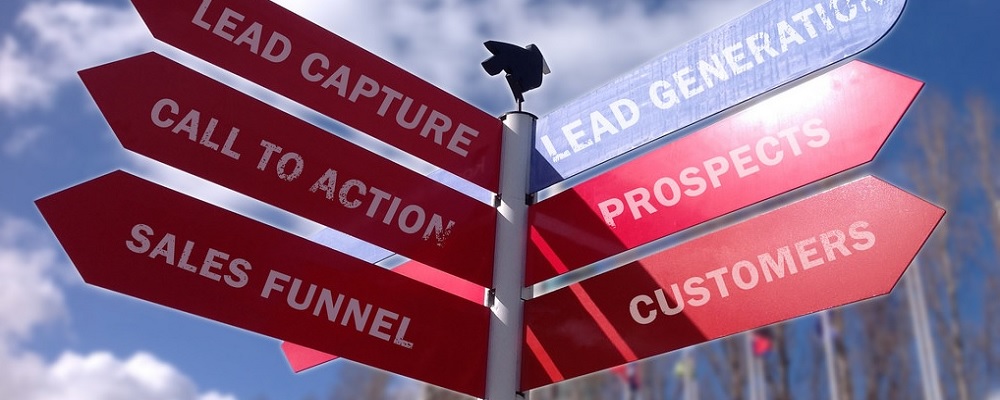
Lead Re-engagement
Did you know you lose 25% of your subscribers every year?
And it’s not just from people who unsubscribe. It’s because they stay subscribed but no longer interact with you. They ignore your emails. So how do you get them back?
A re-engagement email sequence might be able to win them back. The goal of a re-engagement email is to get cold subscribers to begin interacting with your emails again.
To get them to begin engaging again, you need to understand why they stopped in the first place. It could be for one of these reasons:
- Too many emails
- Subject lines that were clickbait
- The design of the email was too confusing
- Not optimized correctly for mobile
- Irrelevant or repetitive content
- They only signed up to get the one-time offer
Before you can get started sending emails for re-engagement, follow the tips below.
Identify subscribers who aren’t engaging. Most email service providers have a way for you to see people who have joined your list at a certain date and haven’t opened any of your recent emails. Then segment them for your re-engagement campaign.
Segment your list so that you are sending different re-engagement emails that are relevant. You want them to be relevant so your subscriber will be more likely to respond. So, look at location, gender, past behavior and other factors when segmenting.
Next you need to create a series. You need to send more than one re-engagement email to be effective. If they aren’t interested to start with, they will need a bit of warming up to get them re-engaged. Three to five emails in a series is a good recommendation.
The first email lets the subscriber know you miss them.
Here is a sample template you can use:
Subject line: Is it something we said?
Hey [subscriber name],
We noticed that you haven’t opened our emails in a while.
Is it something we said?
Is there anything we can do to make our emails more interesting or more relevant for you?
Do you want to change how often you get emails from us? Or what kind of content you see from us? You can change your preferences through the subscription link at the bottom of this email.
If you have a question or some concern, please don’t hesitate to reply to this email and we’ll be glad to help.
[your name]
Next send them a follow up email:
Still want to get our emails?
We noticed you are still listed as “inactive” since you haven’t been opening our emails.
If life is been a little hectic right now and you don’t have time to read, we get that!
Just click here to be removed from our list immediately.
Don’t want to unsubscribe?
Yay!
Simply click here to re-confirm your subscription and be kept up to date on all the upcoming [podcasts, resources, posts, sales].
It’s up to you.
Your signature
Here are ten types of re-engagement emails to send.
- Find out the problem and how you can help them.
- Offer them a special deal.
- Get relevant and personal such as for an anniversary or birthday.
- Let them change their preferences on what content they receive.
- Let them choose how often they get your emails.
- Ask them directly if they want to hear from you.
- Tell them what’s new, updating them on your new products and services.
- Remind them of the benefits you offer.
- If they are abandoned cart subscribers, send them a reminder of what’s in their cart and offer an incentive to complete the sale to get them re-engaged.
- Say goodbye but let them know that they’ll soon be removed from your list.
Getting subscribers who have gone cold and no longer opening your emails re-engaged can be done by sending a series of specific, relevant emails. These types of emails give the subscriber the option to stay on your list or to take some form of action.
Customers
You most likely have subscribers who have purchased something from you. That’s great. But to keep them engaged and buying more, you need to keep their attention and provide value to them. You can do this in several different ways in your emails.
Effective email marketing shouldn’t end when the customer buys your product. As a business owner you want to maintain a strong relationship with your shoppers. You can do this by sending relevant content.
Immediately after they have bought something is the right time to begin strengthening your relationship.
Do this by:
- Providing the shipping information, if it’s a tangible product. Update them on when their item will be delivered. If it’s a digital product, send a confirmation of their purchase and how they can access their product.
- Send a post purchase emails that give them ideas on how to use the product, how to wear the clothing they purchased or how to care for the product.
- Ask for feedback reviews from your customers.
- Cross sell and upsell your products in a future email. This keeps your brand at the front of their mind. You can include recommended products based on their recent browsing or what they purchased. Show similar products the customer might like.
- Send out emails that remind them to replenish something they purchased, if it’s a consumable product.
- Keep them engaged by giving them updates on new products or ways to use the product they purchased.
- Send them an email encouraging them to like your social channels.
- Give them VIP offers. Use the occasional “exclusive subscriber offer”.
- Send them emails with coupons specifically for subscribers who have purchased before only.
- Email them free samples, courses, webinar passes or tickets to your event.
- Educate them on your products, services and the industry.
- Keep them entertained with stories of how others are using the product or service and how they’ve upgraded to another product or service.
However, you do it, be strategic about turning your customers into repeat buyers who want to stay engaged on your email list.
Do this Next
The four stages of email marketing are about the different stages of your email subscribers.
Each one is at a different stage and needs to be treated in the right way for that stage.
Keeping your new or long-term subscribers engaged and ready to buy isn’t a one-email-only strategy. It takes consistent emails with relevant content and engaging offers to keep them.
The best time to start building a relationship with your subscribers is when they first sign up. Send them a welcome email series and continue to engage them.
After the email welcome series, you want to really build on that relationship to create engaged readers and long-term engaged subscribers. You can do this by providing consistent emails that are entertaining, engaging, educational and enlightening.
For those subscribers who have been on your list for a while but no longer read your emails, you have find the reason they stopped. Is it because they simply wanted your free offer, or have you overwhelmed them with too many emails? Whatever the reason contacting them a few times might just get them to stay and become engaged again.
Finally, you have the subscribers who’ve bought from you. You want to keep them engaged and continue to purchase from you. These types of emails will need to be personalized and often include exclusive discounts, offers or deals.
Kick off your Email Marketing efforts with this 7 video-lesson tutorial. Signature training by Walter Nigh. Click Here!
Click on the images above for additional information or access to additional training.

